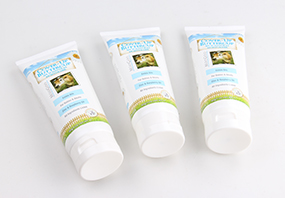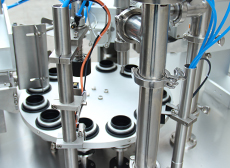- WhatsApp: +86 13606526028
- Email: contact@utien.com
In the modern packaging industry, sealing technology plays a critical role in ensuring product integrity, safety, and shelf life. Two of the most widely used sealing methods are heat sealing and ultrasonic sealing, each offering distinct advantages depending on the application.
While both technologies aim to achieve strong and reliable seals, they differ significantly in terms of working principles, energy consumption, precision, maintenance, and suitability for specific products. This article provides a detailed comparison between heat sealing and ultrasonic sealing, helping manufacturers make informed decisions when selecting the best packaging solution for their vertical form fill seal (VFFS) machines or other automated packaging systems.
Heat sealing is a traditional method that uses heat and pressure to bond two or more thermoplastic materials together. The process typically involves heating metal seal bars to a set temperature and applying them to the material with controlled pressure for a specified dwell time. Afterward, the sealed area cools under pressure to solidify the bond.
Strong Seal Strength: Especially effective for thick or multi-layer films.
Well-Established Technology: Widely adopted across industries due to its reliability and compatibility.
Regulatory Compliance: Many packaging films are specifically designed for heat sealing.
Food packaging (e.g., snack bags, vacuum-sealed meats)
Medical device packaging
Consumer goods (e.g., detergents, powders)
However, heat sealing has limitations such as high energy consumption, longer setup times, and potential thermal damage to sensitive products like chocolates or fresh produce.

Ultrasonic sealing is a newer, advanced method that uses high-frequency acoustic vibrations to generate localized heat within the materials being bonded. Unlike heat sealing, which applies external heat through heated jaws, ultrasonic sealing creates heat at the molecular level where the materials meet. This allows for precise and rapid sealing without overheating the surrounding areas.
Fast Cycle Time: Seals can be completed in milliseconds.
Low Energy Consumption: Only active during the sealing phase.
High Precision: Offers better control over sealing parameters.
Cold Sealing Capability: Ideal for heat-sensitive products.
Fresh produce packaging (e.g., salad kits, fruit trays)
Electronics and medical devices requiring sterile seals
Sachet packaging for liquids, creams, and gels
Despite these advantages, ultrasonic sealing comes with higher initial costs and may not be suitable for all types of packaging films.
Criteria | Heat Sealing | Ultrasonic Sealing |
Seal Strength | Generally stronger due to wider seal area | Stronger for compatible materials; slightly narrower seal |
Energy Consumption | High; requires continuous heating | Low; only consumes power during sealing cycle |
Cycle Speed | Moderate; includes cooling phase | Very fast; no cooling required |
Precision & Control | Limited to temperature, pressure, time | Programmable control over multiple parameters |
Safety | Risk of burns from hot surfaces | Safer operation due to localized heat |
Maintenance | More complex mechanisms; frequent checks needed | Stable and easier to maintain |
Material Compatibility | Broad compatibility with standard films | Works best with ultrasonically compatible films |
Cost | Lower upfront cost; higher long-term cost | Higher upfront cost; lower long-term cost |
When evaluating heat sealing and ultrasonic sealing technologies, cost is a critical factor that extends beyond initial equipment investment. It includes energy consumption, maintenance, material usage, and long-term operational efficiency.
Initial Investment:
Heat sealing systems generally have a lower upfront cost. Standard heat sealers are widely available and often more affordable, making them an attractive option for small to mid-sized operations. In contrast, ultrasonic sealing machines require specialized components such as converters, boosters, and horns, which significantly increase the initial capital expenditure. Adding ultrasonic capabilities to a vertical form fill seal (VFFS) machine can add $50,000 or more to the total equipment cost.
Energy Consumption:
Ultrasonic sealing is more energy-efficient in the long run. While heat sealers continuously consume power to maintain the temperature of the seal bars — even during idle periods — ultrasonic systems only draw power during the brief sealing cycle. This results in notable energy savings, especially in high-speed packaging lines operating for extended hours.
Maintenance and Replacement Costs:
Heat sealing machines are more complex mechanically and prone to wear due to constant exposure to high temperatures. Components like heating elements and Teflon-coated jaws degrade over time and may require frequent replacement, costing between 1,500and1,500and2,000 each. Ultrasonic components such as sonotrodes and anvils are more durable but come at a higher replacement cost — typically three to five times that of heat seal parts.
Material Efficiency:
Ultrasonic sealing allows for narrower seals, reducing film usage per bag. Over time, this translates into significant material cost savings, particularly for high-volume production.
In summary, while ultrasonic sealing has a higher initial cost, its advantages in energy efficiency, reduced material use, and lower long-term maintenance make it a compelling choice for operations prioritizing sustainability and scalability.
When it comes to choosing between heat sealing and ultrasonic sealing, performance is a key consideration. The effectiveness of the seal not only affects product safety and shelf life but also influences packaging efficiency and cost. To better understand which technology delivers superior results, we will examine them from multiple angles — including seal width and material usage, seal strength and integrity, throughput and overall equipment effectiveness (OEE), and application-specific advantages.
Heat Sealing: Typically produces wider seals (4–6 mm), using more film material.
Ultrasonic Sealing: Can reduce seal width by up to 75%, saving on raw material usage.
However, in real-world applications, the actual difference in seal width may be smaller than expected. For example.
Heat Sealing: Known for its robustness, especially in heavy-duty applications. Wider seals distribute stress more evenly, reducing the risk of seal failure.
Ultrasonic Sealing: Offers superior consistency and can seal directly through small contaminants (e.g., leafy greens, crumbs), minimizing leak risks.
Heat Sealing: Currently leads in BPM (bags per minute). Some machines report gains of 40+ BPM over ultrasonic sealing.
Ultrasonic Sealing: Faster sealing cycles improve efficiency, particularly in clean environments where seal contamination is minimal.
ach sealing method excels in different industries based on the specific requirements of the packaging process. Heat sealing is preferred in sectors where durability and barrier protection are critical — such as food packaging for dry goods and vacuum-packed items, medical device packaging requiring sterility, and industrial products needing rugged protection like chemicals or hardware. Ultrasonic sealing, on the other hand, shines in applications demanding precision, cleanliness, and adaptability to contaminants. It is especially effective for fresh produce packaging, electronics, and pharmaceuticals where sterile, consistent seals are essential for product quality and safety.

Apply heat to seal bars.
Press the heated bars onto the packaging film.
Maintain pressure for a set dwell time.
Cool the seal under pressure.
Release and proceed to next cycle.
Convert electrical energy into mechanical vibrations via a converter.
Amplify the vibration amplitude using a booster.
Transmit the vibrations through a horn to the sealing area.
Molecular friction generates localized heat, melting the film layers.
Pressure bonds the layers together instantly.
This unique mechanism makes ultrasonic sealing ideal for applications where precision, speed, and cleanliness are key.
The decision between heat sealing and ultrasonic sealing should be based on your specific production requirements:
Choose Heat Sealing If:
You need maximum seal strength and security.
Your packaging line handles non-compatible films.
Budget constraints limit initial capital expenditure.
You're packaging dry, stable products like snacks or industrial goods.
Choose Ultrasonic Sealing If:
You require faster cycle times and higher throughput.
You're packaging heat-sensitive or contaminated products (e.g., salads).
You want reduced energy use and lower material waste.
You’re investing in long-term operational efficiency.
It’s also worth noting that some manufacturers opt for hybrid solutions, using ultrasonic sealing for top seals and heat sealing for bottom or side seals to balance performance and cost.
Both heat sealing and ultrasonic sealing have their place in the modern packaging landscape. While heat sealing remains the go-to choice for many due to its proven track record and broad compatibility, ultrasonic sealing offers compelling benefits in terms of precision, speed, and sustainability.
Ultimately, the right choice depends on your production volume, product type, packaging materials, and long-term goals. Conducting a thorough evaluation of your current and future needs will help ensure you select the most suitable sealing technology for your packaging line.
If you're still unsure which option is best for your business, consider consulting with a packaging system integrator or conducting trials with both technologies. Making an informed decision today can lead to improved efficiency, reduced costs, and enhanced product quality tomorrow.
At Uiten, we specialize in designing and manufacturing high-performance Ultrasonic Tube Sealers Machines that deliver consistent, clean, and strong seals with minimal material waste. Our advanced ultrasonic sealing solutions are ideal for modern packaging lines that demand high throughput, energy efficiency, and superior seal integrity.
By continuing to use the site you agree to our privacy policy Terms and Conditions.